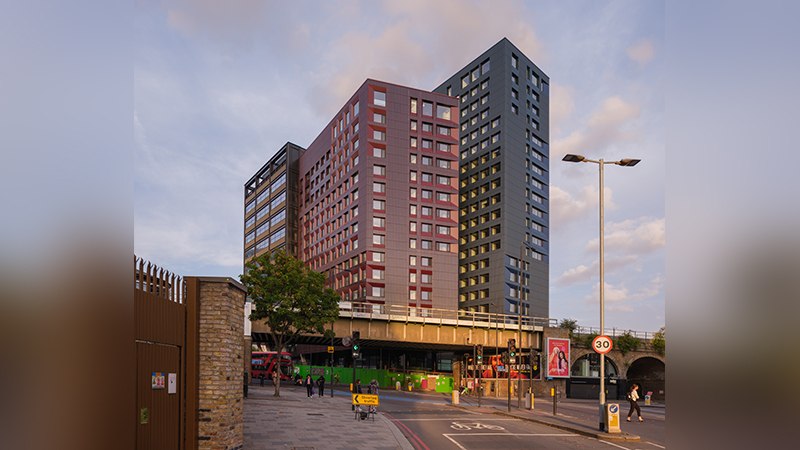What are my options to regain strip of land?
Question
I have recently purchased a house and some adjoining paddock land in Shropshire. The paddock, which was separated from the neighbour’s land by a post and rail fence, was acquired by my vendor from her neighbour in 2012. At the time of its acquisition a separate post and wire fence separated a six-metre strip of the paddock adjacent to the post and rail fence from the remainder, but in discussions before the acquisition the neighbour had confirmed to my vendor that the sale included the fenced-off area. The transfer of the paddock described the land as “the paddock land shown for identification purposes only on the attached plan”; that plan showed only a single fence along which the boundary was drawn in the vicinity of the post and wire fence. At the time of my purchase I believed I was acquiring the whole of the paddock as the post and wire fence had been removed, but the new owners of the neighbouring property disagree. What options are open to me to resolve this issue?
Answer
Whether the fenced-off land was included within the 2012 transfer will depend on what – on a proper interpretation of the transfer – was the extent of the land conveyed. The meaning to be ascribed to “the
paddock land” is that it would be given by a reasonable person who knows what the parties knew at the time of the transfer. Although evidence of
pre-contractual negotiations are not generally admissible to construe a contract or transfer, evidence of discussions which took place to identify what the paddock land was should be so admissible. In any event, where they resulted in a consensus those discussions would be admissible on an application to rectify the transfer to include the fenced-off area within the land transferred.
Explanation – interpreting the transfer
The process of interpreting any written instrument is one of determining how the words used would have been understood by the reasonable person having all the background knowledge which would have been available to the parties at the time the instrument was entered into: Investors Compensation Scheme v West Bromwich Building Society [1998] 1 WLR 896. In the light of such background knowledge, the words used may mean something different to what they appear to mean taken in isolation. However, there is a limit to the background knowledge which is admissible for the purposes of interpreting the instrument: in particular, for policy reasons, evidence of prior negotiations between the parties is inadmissible as an aid to interpretation even though those negotiations may cast an important light on what the parties intended, a rule affirmed by the House of Lords in Chartbrook Ltd v Persimmon Homes Ltd and another [2009] UKHL 38; [2009] 3 EGLR 119.
It is a crucial part of the process of interpreting the transfer to see what land was intended to be conveyed to connect the words of the transfer with the reality on the ground. For this purpose, extrinsic evidence is admissible to identify the plot of land, or the extent of the plot of land to which the transfer relates. This evidence includes not only evidence of the physical layout of the plot and the existence of boundary features on the plot at the time of the transfer by reference to which the parcels clause and plan to the transfer may have been drawn, but also evidence of discussions between the parties by which the extent of the land to be transferred was identified on the ground. That might be thought to infringe the rule against admission of pre-contract negotiations as an aid to interpretation, but in Taylor v Hamer [2003] 1 EGLR 103 Sedley LJ held at para 90 that it fell outside this rule: “… such facts are not within the exclusion zone of prior negotiation and subjective intent described in Lord Hoffmann’s third principle in ICS (above). They are the normal means by which the subject matter of any offer and acceptance is identified.”
The reference in the 2012 transfer to “the paddock land” might be thought to exclude the fenced-off land if the words of the transfer and the plan were considered in isolation, or even in the light of the physical features on the ground at the time of the transfer. But if evidence of pre-contract discussions identifying the extent of the land to be sold are admissible, as Taylor suggests, it casts a different light on the meaning of the words.
Rectifying the transfer
If the evidence of the pre-contract discussions was not admissible as an aid to interpretation of the 2012 transfer, it would nevertheless be admissible on an application to rectify the 2012 transfer. A written instrument may be rectified where the parties were in complete agreement as to the terms of the sale but by a mistake wrote them down wrongly. Here the pre-contract discussions show the parties were in consensus that the fenced-off land was to be included, and so there would have been little difficulty in your seller establishing a rectification claim against her neighbour, the party to the 2012 transfer.
In principle, there is no reason why you may not now bring a rectification claim against your new neighbour, as successor-in-title to the land the subject of the 2012 transfer. The remedy is discretionary and may be refused in cases where a third party has acquired an interest for value and without notice of the right which would be prejudicially affected by an order for rectification or if there has been unconscionable delay. Here, if you were in actual occupation of the whole of the paddock at the time of your new neighbour’s purchase, he would have acquired his land with notice of your right; and that right would be binding on him as an overriding interest under para 2 of schedule 3 of the Land Registration Act 2002; see Blacklocks v J B Developments (Godalming) Ltd [1982] Ch 183. And the passage of time since the 2012 transfer should not bar the grant of relief unless it has given rise to some identifiable prejudice which would now make such relief unconscionable.
Louise Clark is a partner in the property litigation team at Charles Russell Speechlys LLP and Edward Francis is a barrister at Enterprise Chambers











